1916 Visions of Success now realized
Last updated 12/16/2009 at Noon
Part 2 of a 2 part story When in 1899 and 1900 the matter of dredging this channel was again agitated, the question of route was once more a cause of much discussion. In the meantime the town of Port Arthur had been founded and brought to the front as a new port. The magnificent gift by the Kansas City Southern Railroad, in which John W. Gates was prominent, of the Port Arthur ship channel to the government, at once put the new city into prominence as a port.
a meeting held at the old pleasure pier at Port Arthur, Orange was represented by Dr. E.W. Brown; Messrs. George Holland and F.H. Farwell; while Col. C. L. Wallsi and others constituted the delegation from Beaumont. An alliance between the two cities was formed at this conference, it being agreed that they would work together against all opposition until both eventually became deep water ports.
In the meantime, Port Arthur had made a sub-port of entry and was in the field as an aggressive opponent to the use of her new ship channel in connection with plans of the two cities further in-land to develop their deep water facilities. This opposition was finally overcome through the aid of the other cities in the making of Port Arthur, a port of entry.
The way was then clear to the dredging of a channel from the mouths of the Sabine and Neches rivers to connect with the Port Arthur canal.
Through the joint efforts of Senator Joseph Bailey and Congressman Samuel B. Cooper an appropriation was made for this project by Congress in 1901, $325,000 being provided for the dredging of a ten and a half foot channel.
It was realized by both Orange and Beaumont after completion of this channel that their work was only begun.
This preliminary work gave only a water way for barges and heavy tugs.
Men of both cities, who had been prominent advocates of deep water, continued their agitation for further development of the waterways that are believed to be destined to bring these two fair centers to the zenith of their importance.
The next concrete step was a meeting that was held at the Elks' Hall in Orange, a delegation from Beaumont headed by Col. W.S. Davidson, conferring with citizens of Orange. At that conference a plan was formulated to create two navigation districts and to ask the legislature for authority to issue bonds for the development of the waterways.
It was agreed at this meeting that Orange would care for the Orange County Navigation District and that Beaumont would care for Jefferson County. A proposal was then made to the government that if Congress did not care to appropriate the full amount necessary for the development of the two waterways, that each navigation district would raise half of the money required for the dredging; the government would pay the other half.
The legislature gave the necessary authority for the navigation tax in each county and it is to the credit of the citizens of Orange and Jefferson Counties that the vote in favor of the bonds was almost unanimous in each county.
The delegation then moved on to Washington. Messrs. H.J. Lutcher, J.W. Link, W.H. Stark and Dr. E.W. Brown of Orange and Col. W.S. Davidson of Beaumont made trips to the capital to confer with congressmen and senators and to appear before the board of engineers of the United States army in connection with the projects. Congressman Dies and Senator Bailey handled the appropriation bill through Congress and the appropriations asked were finally made in 1911. Work started shortly afterward on the two channels that are now just completed with the opening of the salt water guard locks that were required by the Beaumont navigation district.
As a mater of information it may be said that these are sea level locks and their only purpose is to prevent the inland flow of salt water during the summer months. Their object is to protect the rice fields that abound in this section. During all but two or three months in the year the lock gates will stand open and they will at no time offer hindrances to navigation.
The Port of Orange made her entrance into the world of deep water ports in the year of 1916 with the completion of a 25 foot channel to tide water. The Sabine River offered one of the best land-locked, fresh water harbors to be found in North America, and as predicted, it has grown to be of equal importance of any Gulf port of her size.
As noted by Mr. Sperry, it could not have been accomplished without the dedicated efforts of the citizens, nor could it have continued to grow and prosper to rival other port today if the people were not interested.
Also contributing to this history are articles written by J.M. Dullahan, father of John Dullahan, who presently holds and important position with the Orange County Navigation and Port District.
The elder Mr. Dullahan was employed in the Starks office. He has gone much further into the early shipping of Orange and has written not only an interesting article but one that has been documented by first hand information from the late Robert E. Russell, whom he describes as "a pioneer citizens of Orange" and a diary kept by Mr. Russell's father-in-law, Thomas McFarland.
L. Miller and A.J. Miller have written articles in the booklet concerning the lumber industry. L. Miller was a merchant who operated a grocery mercantile business on the corner of Fourth and Front. He came to Orange sometime in the 1880s and was remembered as wearing white lawn ties and suspenders. He later sold the store to the Aaronson brothers, Joe, Goodman and Morris and went into partnership with J.W. Link to buy the Kirby Lumber Co. mill which was then brought to Orange.
Miller was one of the organizers of the Orange and Northwestern Rail Road to Newton about 1902-1903. The mill prospered for awhile and then died 'a natural death' for want of timber - there were plenty of trees but transportation was the problem.
The Miller-Link Lumber Co. also owned the Orange Manufacturing Co. Oscar S. Tam, who had been brought to Orange as a lumber expert, ran the mill and had invested in the company. When Miller-Link declared bankruptcy, Tam committed suicide. His only son now lives in Seattle.
Also contributing were E.V. Folsom, who worked in the Lutcher and Moore Lumber Co. office; Robert Smith, who assumed control of the Orange Manufacturing Co.; Robert Bradbury, who held some 40 percent interest in the Orange Rice Milling Co., and was the manager then; Rucie A. Moore, Rev. E.T. Drake, F.W. Hustmyre, M.E. Ramsey, H.S. L'Hommedieu, Dr. E.W. Brown, J.O. Sims, A.G. Mallison and L.F. Benckenstein.

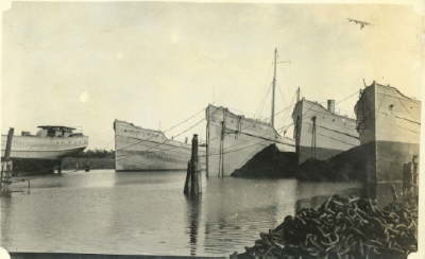
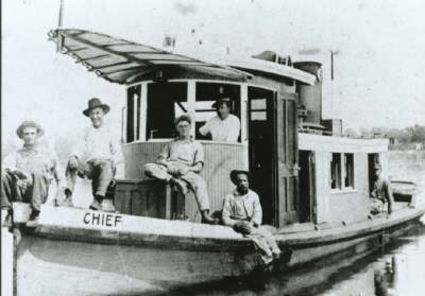
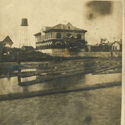
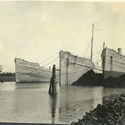
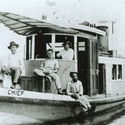













Reader Comments(0)